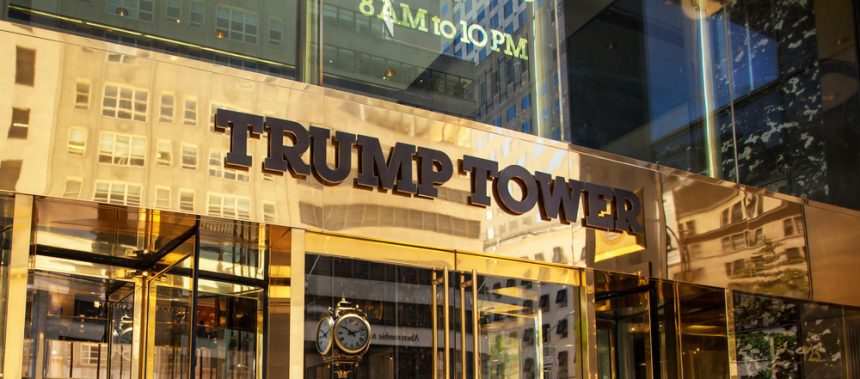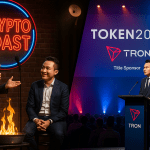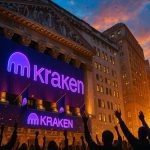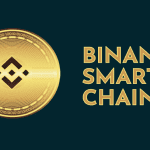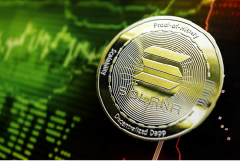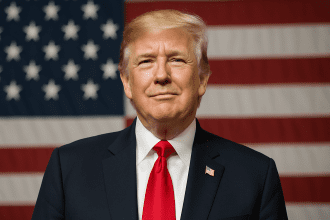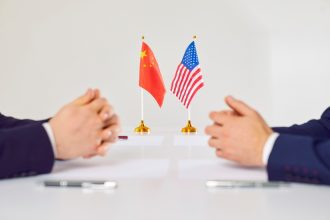Why “On-Chain Trump Tower” Is Suddenly Plausible: Speculation about moving a marquee asset like Trump Tower “on-chain” taps into a bigger, fast-maturing trend: real world asset (RWA) tokenization. In simple terms, tokenization converts rights to an asset such as equity, income claims, or memberships into digital tokens recorded on a blockchain. The idea isn’t science fiction. Luxury properties have already explored this model, including the St. Regis Aspen, whose digital security (ASPEN) trades on a regulated platform and is often cited as a pioneering example in the U.S. market.
From Luxury Address to Liquid Digital Units: A flagship tower is prime for tokenization because brand power and predictable cash flows can translate into investor appetite worldwide. In practice, a property owner can issue a limited supply of compliant digital securities that represent equity or revenue sharing rights, then enable secondary trading on approved marketplaces. When this is done under existing securities exemptions and exchange rules, investors get transparency and potential liquidity without forcing a traditional IPO or REIT listing. That is the design philosophy behind earlier trophy asset tokenizations.
The Trump Factor: Crypto Familiarity Meets Real-Estate DNA: Another reason the concept resonates is the Trump family’s growing crypto footprint. In 2025, their World Liberty Financial (WLFI) token debut drew outsized attention and reportedly traded multiple times above early rounds at launch, signaling a ready made crypto-native audience for future ventures. While token prices fluctuate, the launch underlined the family’s ability to mobilize capital and attention in web3 markets.
What “On-Chain” Could Actually Mean for a Skyscraper: Moving a building “on-chain” doesn’t mean the deed itself lives in a wallet. In jurisdictions like the U.S., the deed still sits with traditional registries. What changes is how investment rights are issued, tracked, and traded. Tokens can map to equity, preferred dividends, revenue-share participations, or perks (such as stays, restaurant credits, or event access). Smart contracts can automate distributions, investor whitelisting, transfer restrictions, and compliance checkpoints features that legacy cap-table software can’t easily globalize.
The Two Big Paths: Security Tokens vs. Utility + Perks: There are two broad routes. The first is a security token approach clearly framed as a security and sold under exemptions like Reg D (U.S.) or equivalent frameworks abroad, then traded on approved ATS venues. This route mirrors the St. Regis Aspen approach and prioritizes investor protections and regulatory clarity. The second route is a hybrid design that layers non financial perks (loyalty, access, membership) on top of a compliant security. The lesson from early case studies: treat anything with profit rights as a security and build utility around it, not the other way around.
How the Numbers Might Stack Up: Imagine a flagship tower with diversified income condos, commercial leases, retail, hospitality, observation fees, and branded experiences. Tokenization allows the issuer to sell a minority sliver of economic rights, preserving control while raising flexible capital. Pricing can reflect current net operating income (NOI), growth prospects, and brand premiums. Programmatic distributions can be piped to token holders on a schedule, with dashboards showing rent rolls, occupancy, and maintenance capex turning a lumpy, opaque asset into a data rich, investable stream.
Liquidity as a Feature, Not a Promise: Liquidity in tokenized real estate depends on venue quality, investor onboarding, transfer rules, and market making. Early tokens proved tradability on compliant platforms is feasible, though volumes ebb and flow. The distinction matters: tokenization can enable liquidity via 24/7 markets and global access; it doesn’t guarantee deep order books from day one. Issuers that plan market-maker partnerships, buy-side marketing, and investor relations functions see better outcomes.
Regulatory Guardrails: The Part Nobody Can Skip: If Trump Tower or any comparable U.S. asset goes on-chain, it would live under securities law. That means disclosures, risk factors, and transfer restrictions are not optional; they are the spine of the deal. Leading law firms stress that tokenization is a form of security issuance, not an escape hatch from regulation. The compliance footprint includes KYC/AML, investor accreditation (where applicable), secondary market venue approvals, and ongoing reporting duties. Getting this right is what separates glossy marketing from an institutional-grade transaction.
Brand Power, Community Flywheel, and Perks: One advantage of tokenizing a famous tower is the built-in brand engine. Holders could receive priority reservations at on site venues, invitations to exclusive events, or even token gated access to virtual experiences that mirror the physical building. In a celebrity-anchored ecosystem, utility can be more than coupons it becomes a membership culture. This is where web3-style community mechanics (airdrops tied to anniversaries, milestone perks, or governance light) can reinforce long-term holder engagement.
Secondary Effects: Benchmark Setting for Trophy Assets: If a headline property successfully tokenizes, it resets expectations for other trophy assets: stadiums, luxury resorts, landmark office towers, and mixed-use destinations. Each successful offering creates comparable data yields, occupancy sensitivity, maintenance cycles that analysts can model. Over time, that data helps price risk more precisely and tightens spreads for high quality assets, creating a self-reinforcing benchmark effect.
Institutional Angle: Why Big Money Would Pay Attention: Institutional allocators are already studying RWAs as a path to yield with transparent, on chain audit trails. A properly structured Trump Tower token could be attractive to family offices and funds seeking exposure to U.S. prime real estate without buying an entire asset or entering a traditional private-equity vehicle. If token holders can rely on custodians, transfer agents, and regulated trading venues mirroring traditional plumbing with blockchain-native efficiency the asset hits the institutional checklist more cleanly.
Data Transparency: Turning a Tower Into a Live Dashboard One of tokenization’s underrated benefits is telemetry. Instead of annual reports and occasional updates, tokenized assets can offer near real time dashboards: rent collections, lease expirations, utility costs, maintenance schedules, ESG metrics, and even IoT-based readings. That steady stream of data can de risk the holding for investors and justify higher valuations over time if operational excellence shows up in the numbers.
Tax, Jurisdiction, and Structure: Where the issuer domiciles the SPV, how profits flow, and how tokens are treated for tax purposes varies by jurisdiction. Deals often use a holding company (LLC or similar) and carve out economic rights for token holders, with clear waterfall language. Cross border investors add withholding and treaty considerations. The bottom line: tokenization compresses admin and cap-table logistics, but it doesn’t erase tax law. Expert counsel and a conservative stance on classification keep the offering investable.
Risk: The Parts Glossy Pitch Decks Skip: No asset is immune to vacancy risk, refinancing risk, cap-rate expansion, or brand shocks. Token holders still face market cycles and property-specific issues think capital expenditure spikes or regulatory changes. Secondary-market liquidity can be thin in risk off environments. None of these are unique to tokens; they are intrinsic to property investing. What tokenization changes is the wrapper and the tooling, not the underlying economics.
Could the Project Actually Happen? A Reality Check: Talk of “on-chain Trump Tower” remains speculative, though reporting indicates the family is exploring tokenization concepts alongside broader crypto initiatives. Even without a formal announcement, the playbook exists: carve out a compliant minority interest, issue digital securities, and list on a regulated alternative trading system. Given the demonstrated web3 audience around the family’s ventures in 2025, demand could be meaningful if the legal and financial engineering clears institutional bars.
What Success Might Look Like in Year One: A successful first year would likely feature: a closed primary raise under exemptions, rapid onboarding of accredited and international investors via KYC portals, predictable quarterly distributions, a functioning secondary market with measured volumes, and a cadence of token-gated utility drops (events, experiences, digital collectibles). Investor relations would be proactive, with transparent KPI dashboards and audited financials an institutional rhythm, but with the web3 flair of programmable perks.
Beyond the Tower: The Domino Effect for RWAs: If a property with global name recognition goes on chain smoothly, copycats follow. Expect hospitality groups to tokenize rooms as revenue rights, sports franchises to tokenize premium seat income, and developers to pre fund projects via milestone released security tokens. The longer-term story isn’t just one tower; it’s a new capital-formation channel that coexists with REITs, private credit, and traditional equity.
Bottom Line: Tokenizing a marquee skyscraper would be less about gimmicks and more about executing a regulated, investor friendly security with a brand driven community layer. The tools and precedents already exist; the differentiator will be governance, disclosures, and real utility. If those land, turning a tower into a global, tradable, data rich asset isn’t just possible it’s probable.
Conclusion:We don’t need to imagine a world where a tower becomes a tradable digital asset the rails are already there. What separates rumor from reality is compliance, investor protections, and sustained utility. A Trump Tower token would likely live as a security with a polished investor UX, automated cash flows, and a community engine layered on top. If executed conservatively and reported transparently, it could be a watershed moment for RWAs turning a single address into a living, breathing, global investment product.


